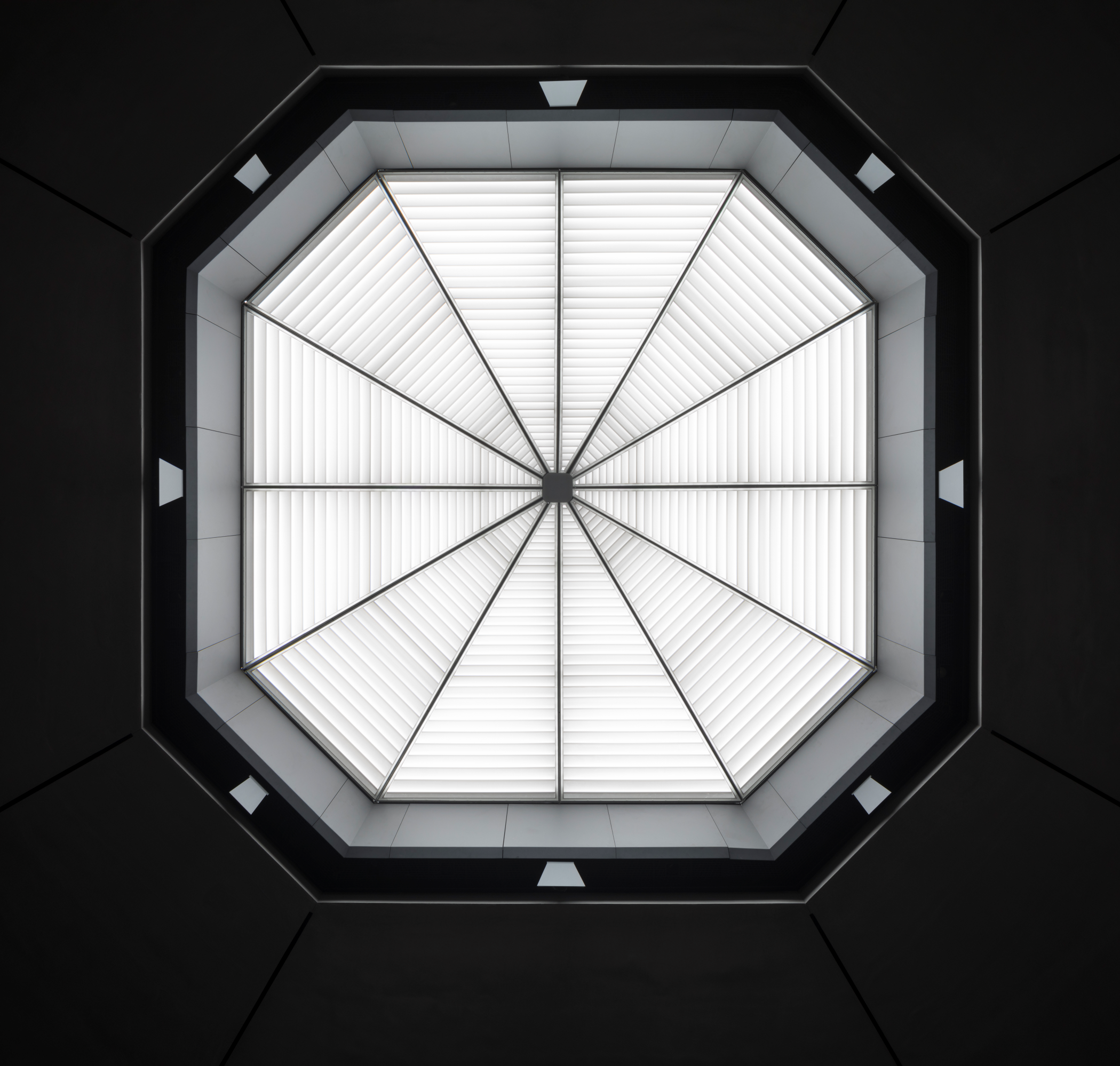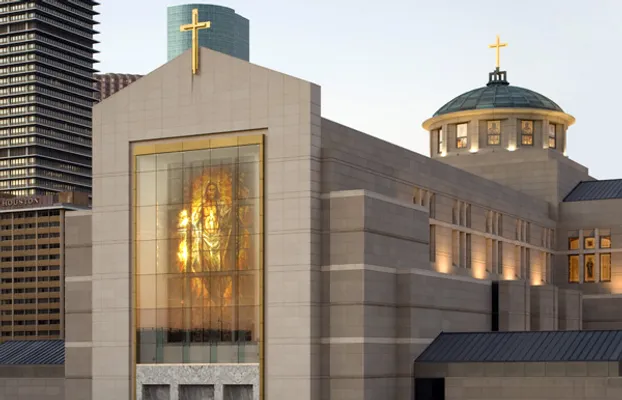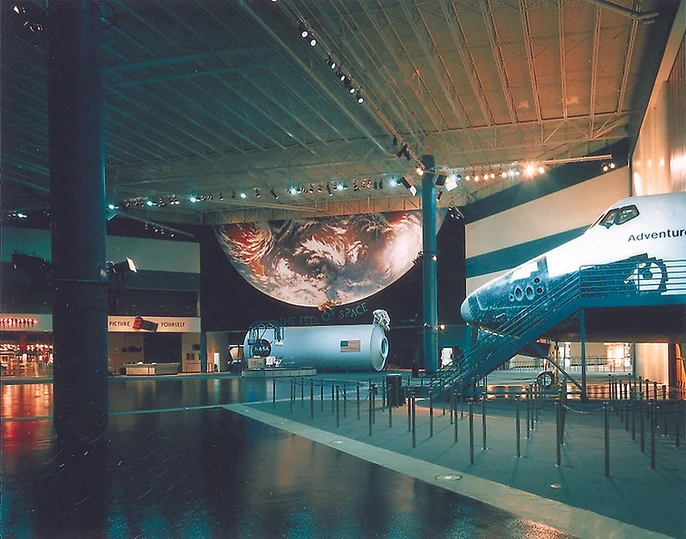Linbeck: Through the Decades (1948-1958)
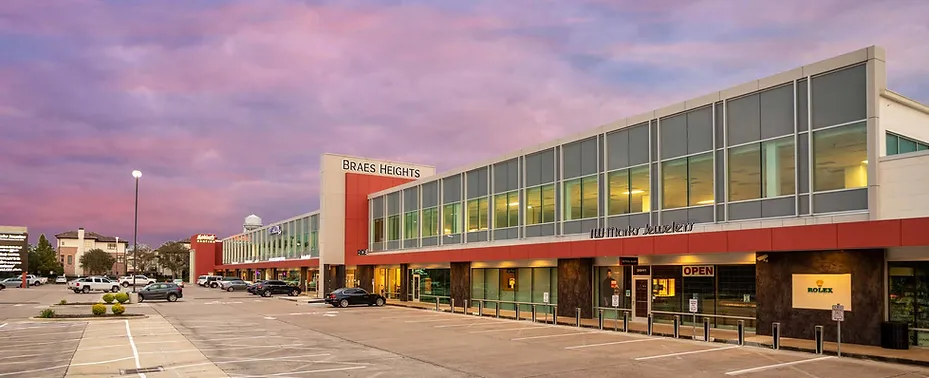
1948-1958
After a successful first decade, Linbeck hit the ground running. The post-war years were spent diversifying our ever-growing portfolio…and fortifying the age of consumerism with new shops, retailers, and shopping centers across Houston.
From the famed Woolworth’s in Downtown to more regional locales like the Braeswood, Braes Heights, and Lakewood shopping centers, these new sites helped broaden Linbeck’s reach across the city.
Other notable builds throughout this decade included facilities at Lackland Air Force Base (San Antonio, Texas) and Bryan Air Force Base (Bryan, Texas), and area schools such as Kashmere Gardens Senior High, Yates High School, and St. Michael’s Catholic School (all Houston, Texas).
Woolworth’s – Houston, TX – 1949
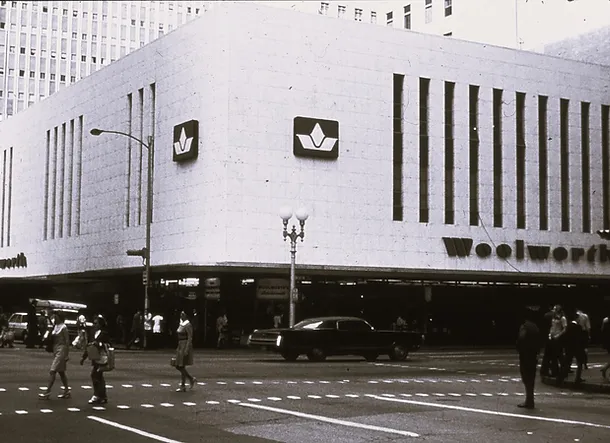
Take a stroll back in time and you’ll discover the lore of Woolworth’s five and dime. Launched by its namesake Frank W. Woolworth, the American store had its roots in the Northeast, but spread rapidly throughout the country starting in 1905. The place was nothing short of legendary–and its corporate office in New York City illustrated the store’s grandeur, earning the rights as the tallest building in the world in 1913.¹
Flash forward 40 years and Woolworth was ready to expand its reach into Houston. But here in Texas, we don’t settle for ordinary. We like to do things bigger. Much bigger.
“World’s Largest Woolworth Store Opens to General Public” was how the Houston Chronicle decidedly drew in its readership on November 15, 1949. And those who would attend the opening ceremonies demonstrated the significance of the new store: Houston Mayor Oscar Holcombe cut the ribbon, while a litany of local dignitaries joined the festivities, including former Governor W. P. Hobby, the editor of the Houston Press, business manager of The Houston Chronicle, and manager of the St. Louis Cardinals. Yes, those St. Louis Cardinals. Officials from F. W. Woolworth in New York also made an appearance, not missing the opening just because it was well out of town.²
The glittering three-story and basement building, with its impressive exterior of white stone, covers a half-block section where the First Presbyterian Church once stood.
The Houston Chronicle
November 15, 1949
So what was the look and feel of a record-breaking Woolworth? As the “ultimate in modern construction,” the store was “completely air-conditioned” (a new non-negotiable to battle the Houston climate), and featured escalators, tarrazo floors, and fluorescent lighting, which added to the “streamlined appearance of the store.“³
Taking the Woolworth up a notch was its food bar, which was equipped to feed hungry customers and provide a welcome respite from their shopping exhaustion. Located on Level One, the food counter was manned by kitchen staff that prepared a host of savory offerings.⁴ A “frozen malt counter” offered the perfect finish to a hearty lunch.⁵
By the 1990s, Woolworth faded into the past, taking with it Houston’s version of the global store. Yet despite its ultimate demise and demolition, the legend of the Woolworth store is still alive among historians and Houstorians alike.
Braeswood Shopping Center – Houston, TX – 1951
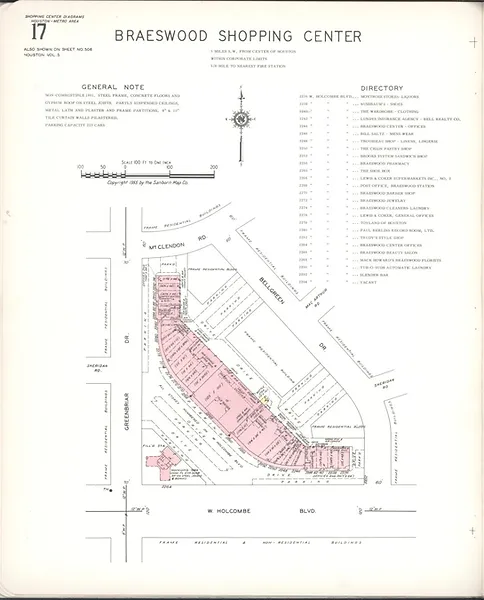
Down the road from the burgeoning Texas Medical Center emerged Braeswood Shopping Center, a “shopper’s dream world” that was dubbed “one of the city’s most beautiful community converging points.” High praises were certainly due for the crescent-shaped shopping center that spanned approximately 60,000 SF (between retail and office space) and included loads of parking. ⁹
The Braeswood Shopping Center was designed to answer the call by residents to have their own neighborhood hub, complete with a Post Office, retailers, and other vendors, one of which included the Lewis & Coker Grocery Store.
Tenants aside, the shopping center would also “introduce several new points of design to Houston,” like its curved nature, plate glass fronts, and vibrant color scheme.¹⁰
While taking on new shops and retailers over the years, the Braeswood Shopping Center continues to deliver on its promise to be a convenient destination for nearby residents. Local restaurants and cafes are among those who have helped keep it alive through the years.
Braes Heights Shopping Center – Houston, TX – 1954

As a builder, you always hope your projects carry on through future generations. With Braes Heights Shopping Center, this has proven to be true.
Nestled between a bustling thoroughfare and quiet residential community, the rectangular structure still stands and maintains its originally planned layout of office space above, retail and restaurants below.⁷
Developed by H. R. Houck and designed by J. B. Reynolds, Linbeck came in swiftly to fulfill Houck’s vision for the modern community hub. Even amidst a building crafts’ strike that caused an interruption spanning 60-90 days, Linbeck still delivered the project and helped contribute to the neighborhood’s rapidly growing population.⁸
While the Braes Heights Shopping Center has seen business come and go, the building appears to be here to stay, if its recent face lifts are any proof. On the east corner, where an Eckerds once stood, Houston’s beloved Molina’s Cantina offers a mouthwatering Tex-Mex fix, while Paulie’s Poboys (formerly Antone’s) adds homemade subs to the mix. A nail salon, luxury jeweler, exercise studio, and CVS Pharmacy are also among those who call Braes Heights Shopping Center home.
Lakewood Shopping Center – Houston, TX – 1955
Lakewood Shopping Center continued on the trend of “expanding-city-in-need-of-more-shopping.” What’s left of Lakewood is a passing memory. However, of all that we don’t know and does not remain of Lakewood, here’s what we do know:
-
The site (suburban at that time) was developed by J. C. Epps at an estimated cost of $2,000,000
-
The structure was a one-story, steel-framed building that was fireproof and came equipped with air conditioning
-
Our aforementioned friend F. W. Woolworth signed a 12,000 SF lease for a self-service variety store
-
Lakewood Shopping Center–like the other centers–illustrated the rapid growth taking place in and around Houston during this period¹

